RC Airplane Aerobatics
Here are some common aerobatic moves and how to perform them.
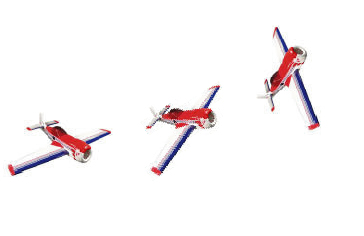
Loop
The Inside Loop is one of the best-known maneuvers, and the easiest to describe (make a circle in the sky!). It's also generally the first maneuver that is attempted after take-off, landing, and straight and level flight are mastered.
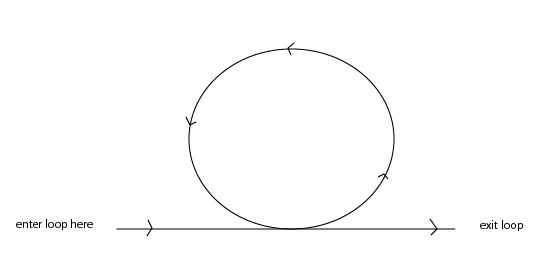
From straight and level flight, start feeding in up elevator so that aircraft noses up. Add throttle to maintain airspeed. Keep adding up elevator until the aircraft is flat on its back, then throttle back a bit.
Add more up elevator to keep the aircraft going around the circle; throttle back some more when the aircraft is pointed straight down. As the plane levels out onto its initial heading, add throttle again.
The loop is in theory really simple, but hard to make perfect. It takes skill to modulate the throttle correctly to make a circle at constant airspeed, entering and exiting at the same point.
Corrections for wind may need to be made with rudder or ailerons.
For a beginner, any similarity to an oval shape is going to very exciting! For lower-powered trainers or gliders, you may need to dive down at bit before entering the loop, to have enough airspeed to make it around.
Make sure that you try your first loops (and other aerobatics) at a high altitude.
Outside Loop
On paper the outside loop looks similar to the inside loop, except it uses down elevator to go around the circle. However, it is a lot more demanding on the airframe, and many beginner aircraft will not handle the stress. Consider this an advanced maneuver and save it for later.
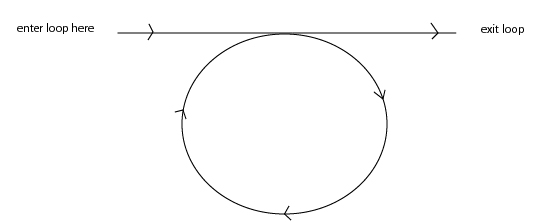
Roll
The roll is perhaps the second maneuver that people attempt after mastering the loop. As the name indicates, the airplane is rotated about the roll axis.
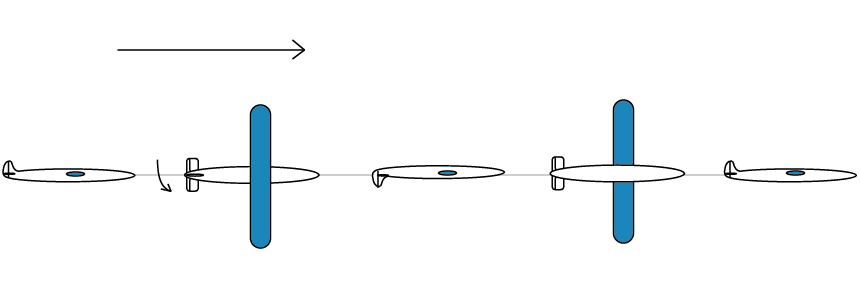
From straight and level flight at good speed, apply full left or right aileron. As the aircraft rolls to inverted, you many need to apply a bit of down elevator. Keep the aileron stick deflected, and remove the down elevator as the aircraft rolls upright. Then release the aileron stick.
Barrel roll
This is similar to the "axial" roll above, but the plane rotates in a spiral instead of about a straight line. Generally happens when trying to roll a 3 channel rudder-only airplane. Note that some 3 ch trainers will be too stable to roll easily.
Snap roll
This is a very fast and sudden roll. It's done by stalling the wing right before rolling. The stall causes a wing to drop, which accelerates the roll.
To perform, reduce the plane's airspeed, then apply full rudder and a bit of up elevator. You should see the plane stall and drop a wingtip.
Add full aileron in the same direction as rudder. As the roll is completed, neutralize the controls. This completes your basic inside snap roll. The snap roll is stressful on the airframe, and can lead to a spin. Consider this an advanced maneuver, and initially perform "3 mistakes high".
Spin
In a spin the aircraft is rotating about a vertical axis, with the wing in a stalled condition. One of the easiest ways to enter this is by doing a snap roll, and holding the control deflections. You can flatten the spin out (slow the descent rate) by gradually decreasing the aileron deflection. Make sure you start off at high altitude!
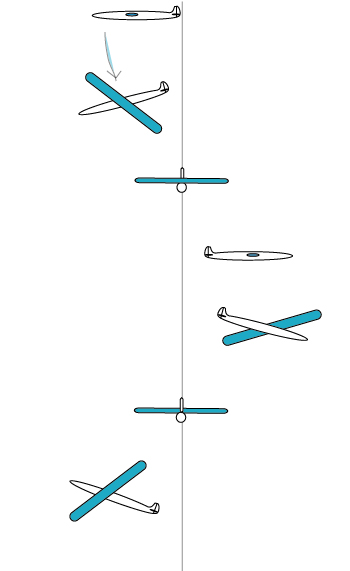
Inverted Spin
Like a regular spin but performed inverted. From inverted flight, push down elevator and give full rudder and full aileron. Hold the controls to maintain the spin. Reduce as aileron as desired to flatten the spin.
Stall turns and Hammerheads
These are easy and fun to do,and good maneuvers for turning around the ends of the flying field.
From straight and level, apply up elevator and throttle as necessary to fly vertically.
As you run out of airspeed (reduce throttle if necessary), the airplane will stall and rotate around into a turn. To make it into a hammerhead, apply full rudder and full throttle at the moment of the stall. This will cause the airplane to rotate sharply about its yaw axis, and come back down on the same vertical line.
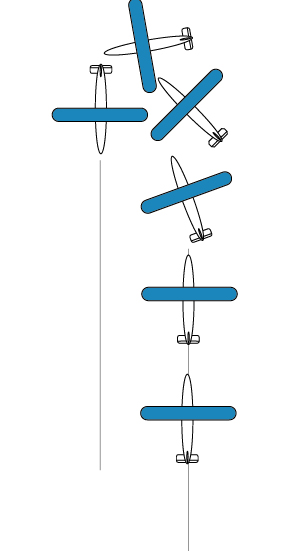
Inverted Flying
Flying upside down is fun, and with the right plane is easier than it looks. Please note that some trainers, especially polyhedral planes, will fly poorly upside down.
Enter a loop (or roll). When inverted, neutralize your elevator (or aileron) and continue flying. Note that you will probably need to apply a bit of down elevator to maintain inverted flight. Your pitch axis is reversed while inverted (down elevator moves the nose up), so pay attention! 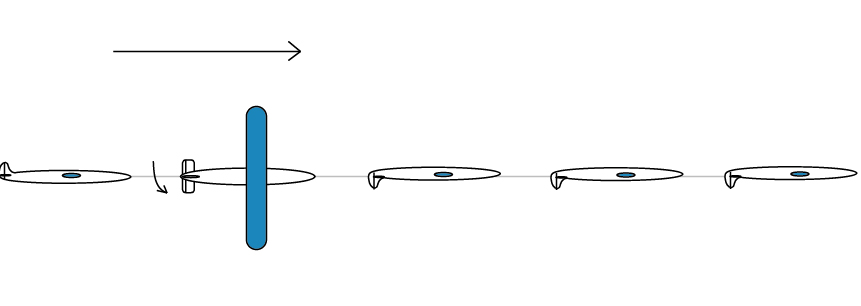 Pattern flight
Pattern flight
Pattern flight is also known as precision aerobatics. It consists of very smooth, precisely controlled maneuvers, done in a well-defined space.
3D flight
3D flight is somewhat of a misnomer, as all flight takes place in three dimensions!
However, it's commonly used to refer to a style of aerobatics that appears more extreme and less smooth than precision aerobatics.
The plane is put into a series of high-angle of attack moves. One of the most popular moves is hovering,
where the plane is essentially pointing straight up but held in one place just like a helicopter. Lots of fun to watch and do!
If you'd like to know more about rc airplane aerobatics, check out the International Miniature Aerobatic Club (IMAC):
http://www.mini-iac.com/DesktopDefault.aspx Or the National Society of Radio Control Aerobatics: http://www.nsrca.org/

